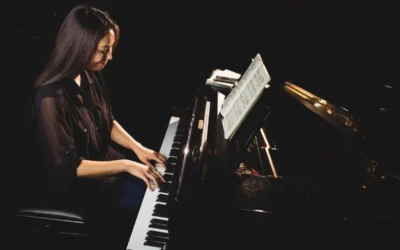Hampstead piano teachers | The Nutcracker Tchaikovsky | Piano Four hands
Tchaikovsky Ballets
Pyotr Ilyich Tchaikovsky composed three of the most popular ballets in the classical dance repertoire.
Swan Lake, Sleeping Beauty and The Nutcracker.
They were premiered in 1877, 1890 and 1892 in the Bolshoi and Mariinsky Theatres, in collaboration with the choreographer Marius Petipa.
From Initial Hesitation to Concert Hall Influence
They were received with tepid enthusiasm.
Partly because the public and critics found it difficult to come to terms with such a substantial and carefully composed ballet score.
Even the public considered the music to be too ‘symphonic’ for the purposes of ballet.
Tchaikovsky turned his attention to the idea of making some of the music available for concert performance in the form of a suite.
Despite their inauspicious beginnings at the time, Tchaikovsky’s ballets not only became the first ballet music to be appreciated away from the stage and in the concert hall, but also influenced later composers such as Stravinsky or Prokofiev.
Tchaikovsky’s music has achieved universal popularity.
It appears in other genres of music such as jazz, rock or heavy metal.
Also in films (Disney, Warner Bros), series (Tom and Jerry, The Simpsons, Sponge Bob) and even video games (Tetris, Wii).
The Nutcracker Suite
The Nutcracker Suite and complete ballet are performed specially during the Christmas season by several ballet companies, orchestras and other ensembles.
Although there are many adaptations, versions and productions in which the story is slightly different, the original libretto is adapted from E. T. A. Hoffmann’s tale “The Nutcracker and the Mouse King”:
On a lovely Christmas Eve, Clara is gifted an enchanted Nutcracker doll. At midnight, while her family sleeps, she wakes up and discovers a battle between mice and toys brought to life. During the battle, she saves the Nutcracker and breaks the spell to turn him into a prince. In celebration, they travel to the magical Kingdom of Sweets; where the Sugar Plum Fairy rules. Together they enjoy an astonishing display of dances in a wonderful land full of flowers, sweets and snowflakes.
The Dance of the Sugar Plum Fairy
Among these dances, there is the dance of the Sugar Plum Fairy, currently one of the best known roles in classical ballet.
Petipa gave Tchaikovsky extremely detailed instructions for the composition of the dance.
He wanted the Sugar Plum Fairy’s music to sound like “drops of water shooting from a fountain”.
Tchaikovsky then came across the recently invented celesta:
“an instrument that looked like a piano, with a divinely wonderful sound”.
Finally he got a balanced union between dance and music.
Don’t miss Hampstead Piano Academy’s teachers, the Duo Ahijado-Pagán, playing the Dance of the Sugar Plum Fairy in the piano duet arrangement by Eduard Langer.
Most Recent Posts
Join the Academy
Piano Lessons
Music Theory



